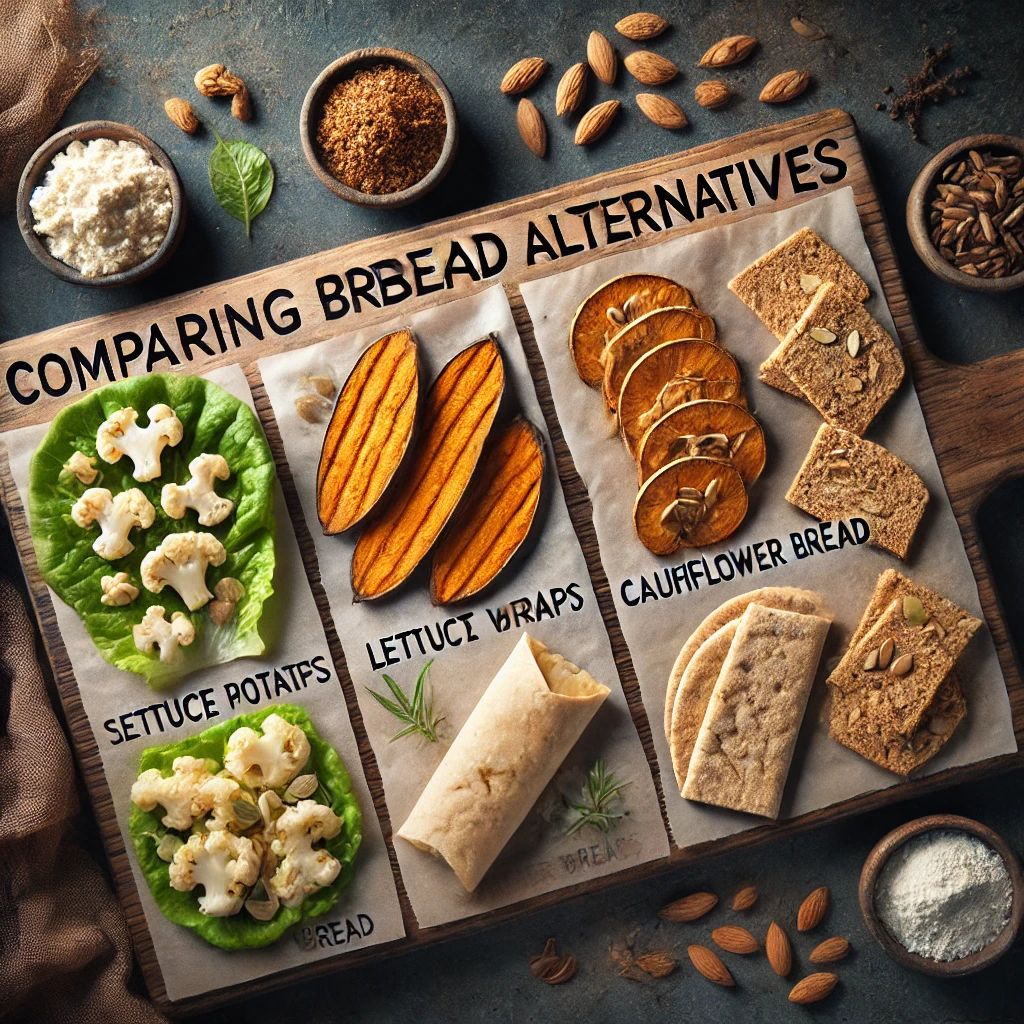All About Alternatives: Bread
Published Nov 12, 2024
Bread has long been a staple in many diets, but it has also been scrutinized by diet culture over the years. While bread contains essential nutrients to keep the body energized, there are various alternatives available for those looking to mix up their diet. These alternatives can offer unique health benefits and add variety to your meals. Here, we’ll explore some popular bread alternatives and offer insights into when and why they might make a great choice.
1. Corn Tortillas
Nutritional Benefits:
Corn tortillas are versatile, gluten-free (unless labeled otherwise), and an excellent choice for individuals with Celiac disease or gluten sensitivities. They are a good source of fiber, with 3–4 grams per large tortilla, and contain around 3 grams of protein. Additionally, they provide essential nutrients like magnesium and plant-based iron.
How to Use Them:
- Make wraps with eggs, cheese, or veggies.
- Try a classic tuna or turkey wrap with avocado.
Dietitian’s Note:
Corn tortillas are a great alternative for those seeking a gluten-free option while still providing a flavorful and satisfying base for various dishes.
2. Collard Greens
Nutritional Benefits:
Collard greens are packed with essential nutrients like vitamin C, calcium, plant-based iron, and magnesium. They are also an excellent source of fiber, which helps stabilize blood sugar levels.
How to Use Them:
- Use as wraps for proteins, vegetables, or spreads.
Dietitian’s Note:
While collard greens are not a direct replacement for bread due to their lack of carbohydrates, they can offer a nutrient-packed option when looking to mix up your meals. Just be mindful that they may not provide the same level of satiety as carbohydrate-rich foods, potentially leading to cravings later.
3. Rice Cakes
Nutritional Benefits:
Rice cakes are often considered a diet food and are gluten-free, making them a useful option for those with Celiac disease. However, they lack significant nutritional content, such as vitamins, minerals, protein, and fiber.
How to Use Them:
- Top with tuna salad, avocado, hummus, or nut butter with banana slices for a nutrient boost.
Dietitian’s Note:
Rice cakes can add crunch and texture but are best used as a vehicle for nutrient-dense toppings.
4. Sweet Potato Toast
Nutritional Benefits:
Sweet potatoes are a rich source of vitamin A, vitamin C, fiber, potassium, and complex carbohydrates. Using sweet potato slices as toast can offer a hearty, gluten-free option that holds up well to various toppings.
How to Use Them:
- Top with yogurt or ricotta and fruit.
- Try protein-packed chicken salad.
Dietitian’s Note:
While it takes a bit more preparation than traditional toast, sweet potato toast offers a satisfying, nutrient-rich alternative that pairs well with both sweet and savory toppings.
The Bottom Line
While there are plenty of bread alternatives available, many stem from diet culture’s vilification of carbohydrates. If you’re choosing alternatives out of fear or because of restrictive diets, it may not be the best choice for your health and relationship with food. Bread can be a nourishing and nutrient-dense option, and there is room to enjoy both bread and its alternatives in a balanced, varied diet.
Enjoy Bread and Its Alternatives Without Stress
Incorporating a mix of bread and alternatives into your meals allows for nutritional diversity. Whether you’re wrapping a burger in collard greens one day or enjoying a turkey sandwich on sourdough the next, you can nourish your body with a wide range of nutrients while keeping food enjoyable and stress-free.
For more nutritional advice and healthy eating tips, explore more on slyacademy.com.







